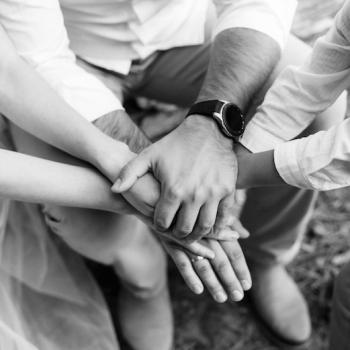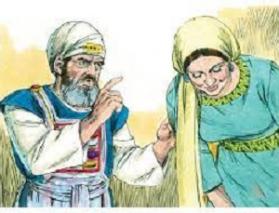I picked up a magazine from the stack next to the couch and flipped through, evaluating one depiction of a modern woman after another: I was fairly certain that God had given me this idea, so I figured he must have some exciting solution in store. I couldn't wait to find my image.
Nothing struck me in the magazine, so I turned to the internet and browsed everything from oil paintings to ads to clip art, all the while asking, "What would Mary look like if she lived here and now?" Would her hair be short or long? Would she wear blouses or t-shirts? Would her face reveal an expression of unbridled joy or serious contemplation? No answer came. I kept looking.
"How Gloriously Different All the Saints"
I didn't find an image that day, or the day after. In fact, my search stretched on for weeks. Meanwhile, I kept thinking about the concept of true Catholic womanhood. I took a closer look at the lives of female saints, and kept my ears perked for any Church teaching on the subject. What I discovered surprised me.
From the beginning of my conversion, I'd been aware of the call to die to self and become like Christ. In the Gospel of John we read that, "He must increase, but I must decrease (3:30, RSV)." In his letter to the Galatians, Paul says that he no longer lives, but Christ lives in him (Gal. 2:20). In Lumen Gentium (the Second Vatican Council's Dogmatic Constitution on the Church), we read, "All the members [of the Body of Christ] ought to be molded in the likeness of Him, until Christ be formed in them."
Here's how I understood these teachings: becoming like Christ meant becoming unlike yourself. I had a rigid idea of what a devout person looked like and assumed that all holy people were basically carbon copies of one another. But that's not what I found when I looked more closely at the lives of the saints.
For example, I discovered that while many were naturally at ease in social situations, such as the gifted administrator and teacher St. Frances Cabrini or St. Elizabeth Ann Seton who captivated everyone with her charm, some were not. Saint Frances of Rome was so introverted that she suffered a serious breakdown after the banquets and parties that accompanied her marriage!
And when it came to marriage, some saints were happily married, such as St. Margaret of Scotland, some had difficult marriages, such as St. Monica, some were separated from their husbands like St. Radegunde and St. Etheldreda, and some, like St. Helena, were divorced. .
Of course, all the female servants of God throughout the ages lived in quiet, orderly environments that were perfectly conducive to prayer, right? This was impossible for women like me with large families. But then I encountered St. Jeanne de Lestonnac who ran her estate by herself after her husband died, in addition to raising five children. St. Margaret of Scotland and St. Bridget of Sweden each had eight children, and St. Joaquina Vedruna had nine.
By now my stereotypical thinking was in full retreat, including the notion that the saints were happy all the time. I learned that St. Catherine of Genoa battled severe depression for years, and I was as surprised as the rest of the world when it became clear that Mother Teresa heroically endured fifty years of the "dark night of the soul." Even super-saint Therese of Lisieux went through a final period of intense interior darkness before her death.
C.S. Lewis once observed, "How monotonously alike all the tyrants of the world, how gloriously different all the saints." I had to agree. When I took a fresh look at real Christian holiness, this is what I found: Diversity. Uniqueness. People of all different temperaments and lifestyles, with a wide array of personal strengths and weaknesses.
Lumen Gentium specifically praised the different forms that holiness can take, noting that the Holy Spirit "distributes special graces among the faithful of every rank," and that "by these gifts He makes them fit and ready to undertake the various tasks. . .which contribute toward the renewal and building up of the Church." He praised the Church for having a "wonderful diversity," where "each individual part contributes through its special gifts to the good of the other parts and of the whole Church.
In other words, there is not a one-size-fits-all template for being a good Catholic. I didn't have to ape women like my friend Teresa in order to live my faith to the fullest.
It was time to take another look at what Catholic womanhood might mean for me.
Discovering Your Unique Type of Holiness
I threw myself into this quest, reading everything I could find on the subject and consulting confessors and a spiritual director. This is what I learned: to uncover your unique brand of holiness you have to sift your God-given quirks and talents from your sins. So, for example, I shouldn't feel bad about the fact that I'm the type of person who sometimes ends up stumbling out of the car window at church. God gave me a brain that drifts toward quirky ideas. Instead of bemoaning that, I should ask how I can use that unique characteristic to do his work. But my occasional use of profanity and tendency to complain about everything? Those should go.




